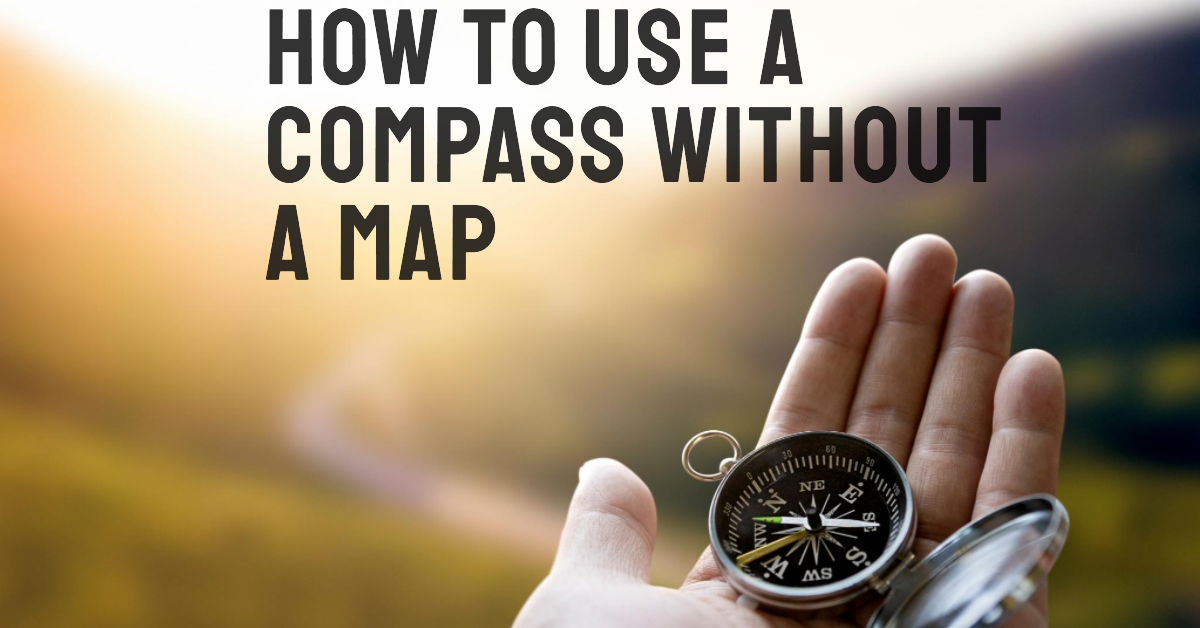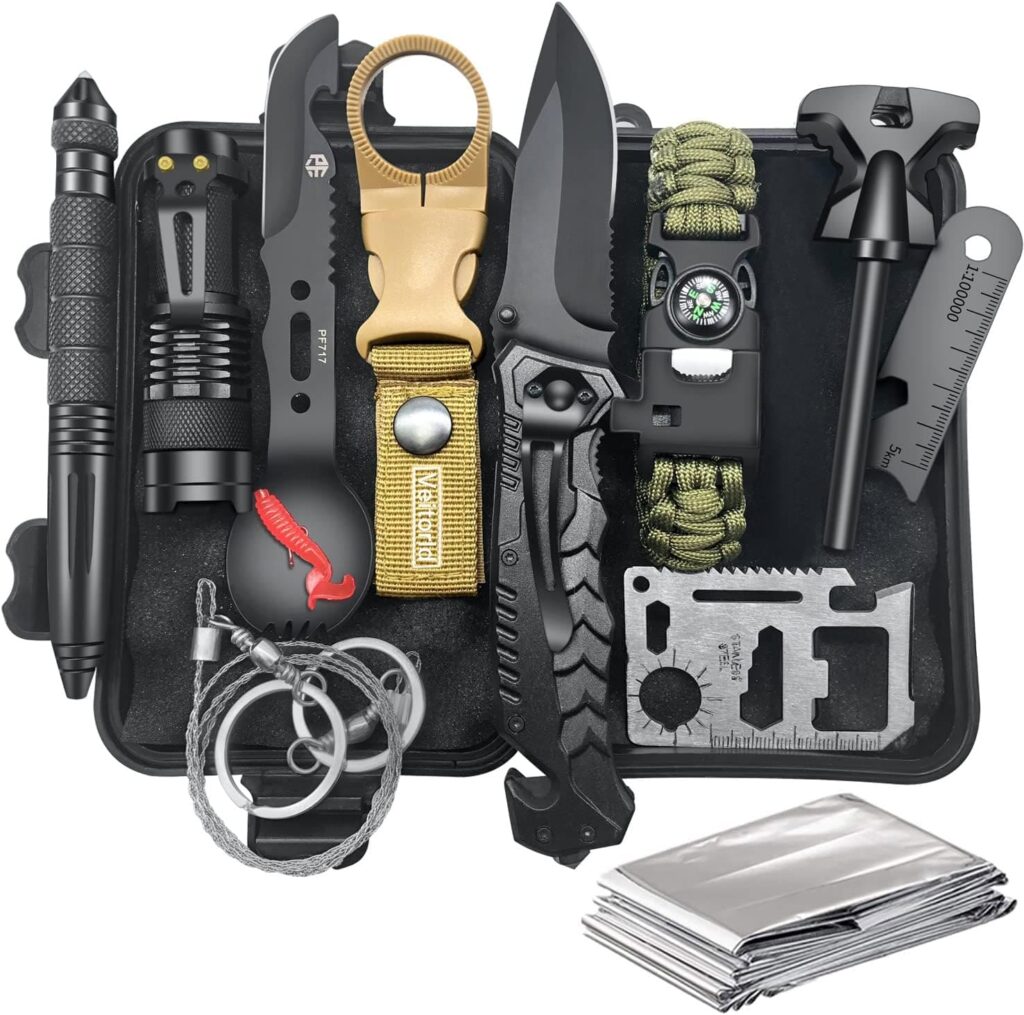Navigating the great outdoors can be a thrilling experience, but it can also be daunting, especially if you find yourself without a map. While a map provides a visual representation of the terrain, a compass is an indispensable tool that points the way. Even without a map, a compass can be a lifesaver, guiding you in the right direction and ensuring you stay on course. But how exactly do you use a compass without the aid of a map?
Key Takeaways
- A compass is a vital navigation tool that can be used independently of a map.
- Understanding the basic parts of a compass is crucial for effective navigation.
- Natural landmarks and the sun can be used in conjunction with a compass for better orientation.
- Regularly checking your compass ensures you stay on the right path.

Basics of a Compass
Parts of a Compass
Before diving into the techniques of using a compass, it’s essential to familiarize yourself with its basic parts:
- Magnetic Needle: This red and white needle always points towards the Earth’s magnetic north.
- Orienting Arrow: This arrow is used to align the compass with the map’s north.
- Direction of Travel Arrow: Points in the direction you should move towards.

Magnetic North vs. True North
One of the first things to understand when using a compass is the difference between magnetic north and true north. While maps are oriented towards true north (the North Pole), a compass points towards magnetic north, a point in northern Canada that moves over time. This difference is known as magnetic declination.
Using a Compass Alone
Setting a Bearing
To navigate using a compass:
- Hold the compass flat in your hand.
- Turn yourself until your desired direction aligns with the direction of travel arrow.
- The magnetic needle will move, but keep your course steady in the direction of the travel arrow.
Navigating with Natural Landmarks
Even without a map, the natural environment provides plenty of cues to help orient yourself:
- The Sun: In the Northern Hemisphere, the sun rises in the east and sets in the west. At noon, it’s roughly in the south.
- Stars: The North Star (Polaris) in the Northern Hemisphere always points north.
- Landmarks: Mountains, rivers, and other landmarks can help in determining direction.

Regularly Check Your Compass
When navigating without a map, it’s crucial to check your compass regularly. This ensures you’re always heading in the right direction and makes course corrections easier.
Advanced Compass Techniques
Triangulation
If you’re unsure of your location, you can use triangulation:
- Identify two distant landmarks that you can also find on your map.
- Measure the bearing from you to each landmark.
- Draw a line from each landmark on the map along the back bearing.
- Where the lines intersect is your approximate location.
Navigating in Poor Visibility
In conditions like fog or heavy rain, where visibility is reduced:
- Use shorter legs of your journey, so you’re checking off features more regularly.
- Trust your compass and avoid the temptation to follow vague paths or tracks that might lead you astray.
Table 1: Compass Parts and Their Functions
| Part | Function |
|---|---|
| Magnetic Needle | Always points towards the Earth’s magnetic north. |
| Orienting Arrow | Used to align the compass with the map’s north. |
| Direction of Travel Arrow | Points in the direction you should move towards. |
Advanced Navigation Techniques
Using the Compass with the Sun
Navigating using the sun is a time-tested method. Here’s how you can do it with a compass:
- Morning: In the morning, the sun rises roughly in the east. Use this knowledge to set a general eastward bearing on your compass.
- Noon: Around noon, the sun will be in the southern part of the sky (in the Northern Hemisphere). Adjust your compass accordingly to maintain a correct bearing.
- Evening: In the evening, the sun sets roughly in the west. Adjust your compass to a general westward bearing.

Navigating by Night
Navigating at night can be challenging, but the stars can be your guide:
- Northern Hemisphere: Locate the North Star (Polaris), which is aligned with the Earth’s axis and points towards the north.
- Southern Hemisphere: In the southern hemisphere, the Southern Cross constellation can help in determining the south direction.
Compass Errors and How to Correct Them
Magnetic Declination
Magnetic declination is the angle between magnetic north (where the compass points) and true north (geographical north). This angle varies depending on your geographical location. Understanding and adjusting for magnetic declination is crucial for accurate navigation.
Interference from Electronic Devices
Electronic devices and metal objects can interfere with the compass reading. Always use the compass away from such devices to get an accurate reading.
Table 2: Common Compass Errors and Corrections
| Error Type | Description | Correction Method |
|---|---|---|
| Magnetic Declination | The difference between magnetic north and true north. | Adjust the compass according to the local magnetic declination. |
| Interference | Errors caused by electronic devices and metal objects. | Use the compass away from such devices and objects. |

Frequently Asked Questions
How Can I Use a Compass to Find My Direction Without a Map?
Using a compass without a map involves understanding the basic parts of a compass and how to set a bearing based on the direction you wish to travel. You can also use natural landmarks and celestial bodies like the sun and stars to aid in navigation.
What is the Difference Between Magnetic North and True North?
Magnetic north is where the compass points, which is influenced by the Earth’s magnetic field. True north, on the other hand, is the geographical north pole. The difference between the two is known as magnetic declination, which varies depending on your geographical location.
How Can I Correct Compass Errors?
Compass errors can occur due to magnetic declination and interference from electronic devices and metal objects. Correcting these errors involves adjusting for magnetic declination and using the compass away from devices and objects that cause interference.






